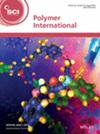Miaojia Ye, Qian Hu, Xiaoyue Huang, Yiwen Wang, Wanchao Wu, Xinzhe Zhang, Chonggang Wu, Chuanqun Hu
求助PDF
{"title":"生物衍生的高强度水性聚氨酯,采用纤维素-纳米纤维稳定的皮克林乳液","authors":"Miaojia Ye, Qian Hu, Xiaoyue Huang, Yiwen Wang, Wanchao Wu, Xinzhe Zhang, Chonggang Wu, Chuanqun Hu","doi":"10.1002/pi.70009","DOIUrl":null,"url":null,"abstract":"<p>Renewable biomass resources, including castor oil and cellulose, present promising avenues for sustainable polymer synthesis. This study involved the fabrication of a novel waterborne polyurethane utilizing cellulose nanofibers (CNFs) as a Pickering emulsion stabilizer and castor oil as a bio-derived polyol. Two different CNFs assessed the function of CNFs in stabilizing castor-oil-derived waterborne polyurethane emulsions by the ratio, their concentration and the emulsion storage duration. Dynamic light scattering and rheological assessments established that CNFs significantly enhanced emulsion stability by forming a semi-flexible network, which impeded droplet coalescence. Moreover, the incorporation of CNFs improved the mechanical performance of castor-oil-derived waterborne polyurethane films. Specifically, the addition of 1 wt% of the longer CNF resulted in an increase in the tensile strength and Young's modulus to 21.2 MPa and 91.0 MPa, respectively, signifying improvements of 103.0% and 256.6% over the CNF-free control. This investigation underscores the synergistic potential of biomass-derived nanomaterials in the design of high-performance, environmentally friendly polymers. © 2025 Society of Chemical Industry.</p>","PeriodicalId":20404,"journal":{"name":"Polymer International","volume":"74 11","pages":"1003-1013"},"PeriodicalIF":3.6000,"publicationDate":"2025-07-10","publicationTypes":"Journal Article","fieldsOfStudy":null,"isOpenAccess":false,"openAccessPdf":"","citationCount":"0","resultStr":"{\"title\":\"Bio-derived high-strength waterborne polyurethane using cellulose-nanofiber-stabilized Pickering emulsion\",\"authors\":\"Miaojia Ye, Qian Hu, Xiaoyue Huang, Yiwen Wang, Wanchao Wu, Xinzhe Zhang, Chonggang Wu, Chuanqun Hu\",\"doi\":\"10.1002/pi.70009\",\"DOIUrl\":null,\"url\":null,\"abstract\":\"<p>Renewable biomass resources, including castor oil and cellulose, present promising avenues for sustainable polymer synthesis. This study involved the fabrication of a novel waterborne polyurethane utilizing cellulose nanofibers (CNFs) as a Pickering emulsion stabilizer and castor oil as a bio-derived polyol. Two different CNFs assessed the function of CNFs in stabilizing castor-oil-derived waterborne polyurethane emulsions by the ratio, their concentration and the emulsion storage duration. Dynamic light scattering and rheological assessments established that CNFs significantly enhanced emulsion stability by forming a semi-flexible network, which impeded droplet coalescence. Moreover, the incorporation of CNFs improved the mechanical performance of castor-oil-derived waterborne polyurethane films. Specifically, the addition of 1 wt% of the longer CNF resulted in an increase in the tensile strength and Young's modulus to 21.2 MPa and 91.0 MPa, respectively, signifying improvements of 103.0% and 256.6% over the CNF-free control. This investigation underscores the synergistic potential of biomass-derived nanomaterials in the design of high-performance, environmentally friendly polymers. © 2025 Society of Chemical Industry.</p>\",\"PeriodicalId\":20404,\"journal\":{\"name\":\"Polymer International\",\"volume\":\"74 11\",\"pages\":\"1003-1013\"},\"PeriodicalIF\":3.6000,\"publicationDate\":\"2025-07-10\",\"publicationTypes\":\"Journal Article\",\"fieldsOfStudy\":null,\"isOpenAccess\":false,\"openAccessPdf\":\"\",\"citationCount\":\"0\",\"resultStr\":null,\"platform\":\"Semanticscholar\",\"paperid\":null,\"PeriodicalName\":\"Polymer International\",\"FirstCategoryId\":\"92\",\"ListUrlMain\":\"https://scijournals.onlinelibrary.wiley.com/doi/10.1002/pi.70009\",\"RegionNum\":4,\"RegionCategory\":\"化学\",\"ArticlePicture\":[],\"TitleCN\":null,\"AbstractTextCN\":null,\"PMCID\":null,\"EPubDate\":\"\",\"PubModel\":\"\",\"JCR\":\"Q2\",\"JCRName\":\"POLYMER SCIENCE\",\"Score\":null,\"Total\":0}","platform":"Semanticscholar","paperid":null,"PeriodicalName":"Polymer International","FirstCategoryId":"92","ListUrlMain":"https://scijournals.onlinelibrary.wiley.com/doi/10.1002/pi.70009","RegionNum":4,"RegionCategory":"化学","ArticlePicture":[],"TitleCN":null,"AbstractTextCN":null,"PMCID":null,"EPubDate":"","PubModel":"","JCR":"Q2","JCRName":"POLYMER SCIENCE","Score":null,"Total":0}
引用次数: 0
引用
批量引用


 求助内容:
求助内容: 应助结果提醒方式:
应助结果提醒方式:


